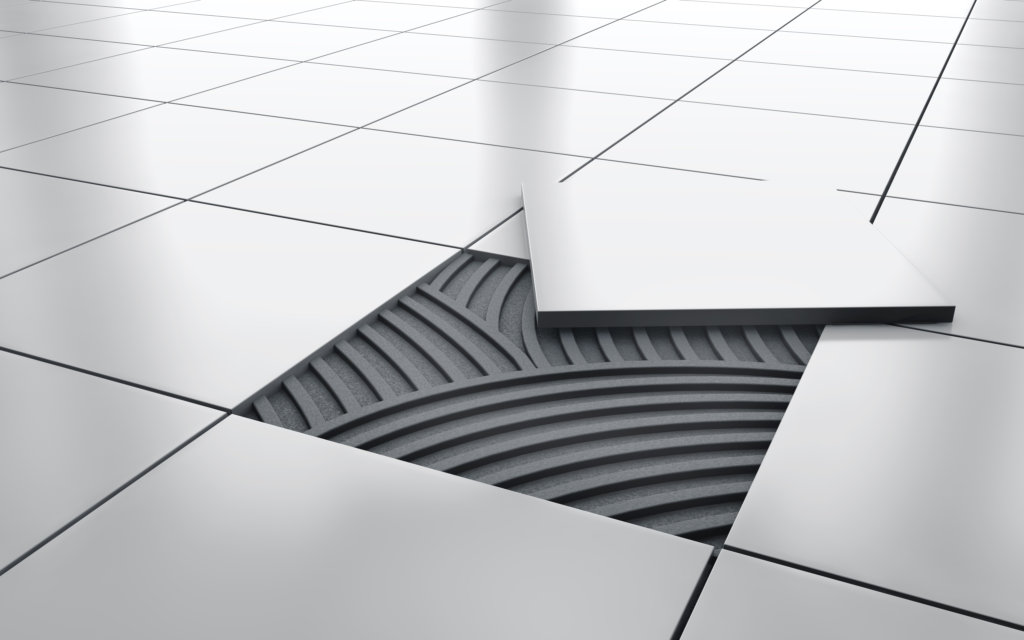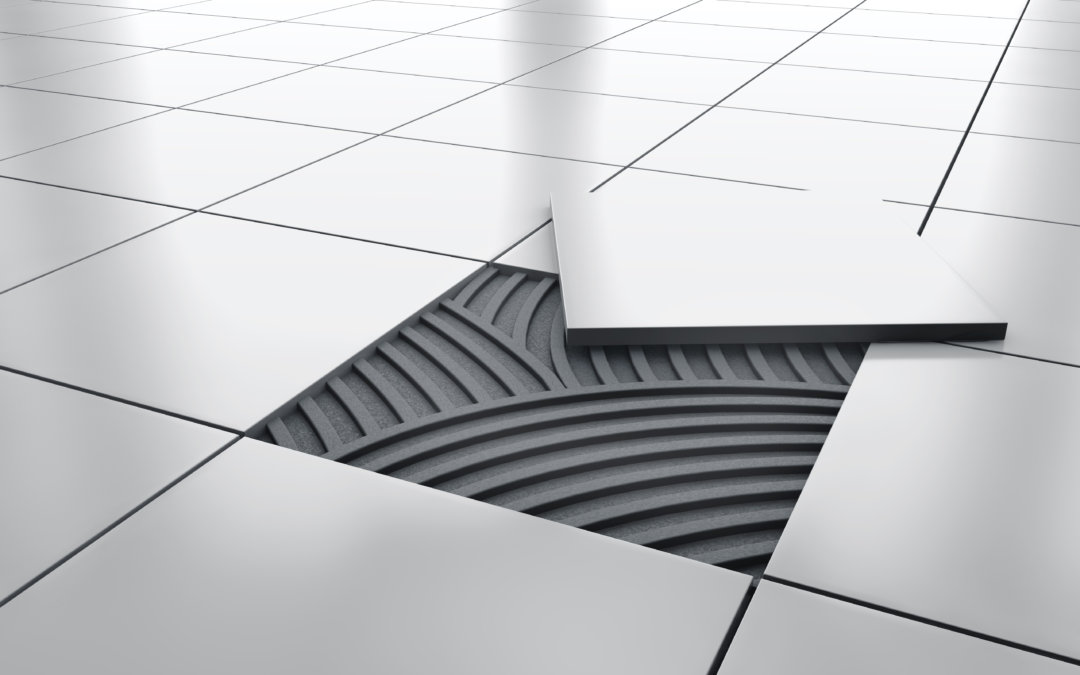
When you picture a standard bathroom, it’s likely that floor tiling comes to mind. Whether ceramic or porcelain, this type of finish might look pretty slick and sophisticated, but it can actually pose a lot of issues for people, especially if the installation isn’t up to scratch.
Bathroom floors are especially more prone to damage than others in your household, and with everyday showers, spills, and humidity, these elements can really take a toll on your floor.
Get a FREE Brochure
Simply complete our form to see a full range of bathing solutions & their key features. It takes no time at all!
Here, we discuss the more negative aspects of tile flooring, and why you may want to consider ripping them out and replacing them with other floor styles more equipped to handle your daily bathing needs.
Top five reasons to remove bathroom floor tiling
- Uncomfortable
From your morning to your evening cleansing routine, you may find that standing for prolonged periods of time is a common theme in your bathroom. In which case, you’ll want to ensure a comfortable floor to accommodate your activity. This is where bathroom tiles aren’t such a good addition.
Ceramic tiles in particular are extremely hard. While this makes them easy to clean and maintain, it doesn’t do much for your feet and general comfort. Hard ceramics are also different to resilient floors, in that they cannot be softened using padded underlay.
- Mould growth and costly repairs
Tiles can be a dream to clean, however, this isn’t always applicable where grout is concerned. In particular, the grout lines between the tiles can be an invitation for moisture – and think just how much moisture your bathroom sees on a daily basis. If lines between your tiles aren’t sealed adequately, water can get deep down in between.
This not only weakens their installation but it increases the risk for mould and mildew growth. Definitely not what you want in your squeaky-clean bathroom and one of the most convincing reasons to remove your bathroom tiling. In addition, this type of issue could lead to expensive problems further down the road that you’ll have no choice but to repair.
- Lack of warmth
Not all tiles are made equally and some can hold onto their heat relatively well. But all tiles will be affected based on the time of year, as all tiles will inevitably become cold when the cold weather hits. This can be another reason to remove your bathroom tiles – making an extremely unwelcome occurrence first thing in the morning or when you’re padding around your bathroom barefoot.
You can counteract the effects with electric mats or subfloor heating. You could even purchase a rug or two to help soften the experience, but each come with either costly or potentially hazardous consequences.
- The weight
One thing you may not necessarily consider with tile flooring is the weight. This type of flooring is extremely heavy, which means it might not be the best choice for upper-floor installations. Whether this is due to structural integrity or noise issues underneath, you’ll need to make sure your bathroom can take the extra weight when it comes to tiles being laid down.
- May lead to falls
Another reason to consider removing your bathroom tiling is that it could lead to more falls. Due to bathroom tiling’s hard-wearing surface, this also means it’s pretty slippery. So if placed in a bathroom area where water and liquid are easily spilled, this could be a recipe for disaster. The last thing you want to be worried about when taking your daily shower or bath, or any other bathroom activity is an accidental slip or fall out of your control. Particularly if you’re looking to make your bathroom more mobility friendly.
Alternatives to tile flooring for bathrooms
Vinyl
As the most resilient form of bathroom flooring, vinyl is a great choice as it comes in a variety of colours, patterns and finishes and can even mimic wood or stone. Many luxury brands offer a simple “self-adhesive” vinyl, which means all you have to do is remove the backing and press into place on a pre-prepared subfloor. Here are some of the key benefits of vinyl flooring:
- Easy to install
- Affordable
- Eye-catching and unique
- Highly durable
There are two main types of vinyl flooring, the first one being…
Traditional vinyl flooring
As one of the most water-resistant materials, you can get your hands on, vinyl sheets come without seams. This means water is unable to penetrate through gaps onto the subfloor. For those looking for a water-resistant bathroom flooring solution, vinyl will likely be at the top of your list.
Sold in either flexible sheets or square tiles, vinyl comes with a thin backing layer of felt or fibreglass with a further layer of bonded solid vinyl. This layer of vinyl is then printed with its required design before being coated with a transparent protective agent. Traditional vinyl is easy to clean, low in cost and a practical solution for bathroom floors.
Then, there’s…
Luxury vinyl flooring (LVF)
The main difference with this type of vinyl is to do with its thickness. Primarily designed with durability in mind, luxury vinyl is roughly five times thicker than traditional vinyl, making it less susceptible to scratches and making it last longer overall – 20 years give or take in comparison to 5-15 years for traditional vinyl flooring.
As this type of flooring is relatively new, it’s difficult to say exactly how long it will last but as a new and improved version of vinyl flooring, this is one of its key selling points.
In addition to enhanced durability, LVF can be a little more costly than the traditional kind, however, there are options to suit every price range. One of the additional benefits LVF provides is the variety of different, professional-looking finishes, such as stone and wood.
As well as self-adhesive varieties, there are also those that require no glue or underlay and all that’s needed is to click the panels into place. Et voila, a new floor as simple as that. You can even use some brands with underfloor heating for additional warmth and comfort.
Rubber
If an easy to clean and easy to maintain bathroom floor is at the top of your list, rubber is a good choice of material. It also offers warmth and comfort, which is ideal when spending time focusing on your morning or evening routine. Or even just stepping foot out of your bath or shower.
Rubber is also waterproof and easy to clean, which makes it a great choice for the bathroom due to various spills. It’s also a slightly more unusual floor choice and so can give your bathroom some character without becoming the main focus. The main benefits of rubber bathroom flooring are:
- Hard-wearing
- Warm
- Soft underfoot
- Comes with an array of colours, patterns and textures
- Shock absorbent
- Hygienic and easy to clean
- Easy to maintain
This type of bathroom flooring can be slippery, however, so in order to ensure safety, particularly if you suffer from mobility issues, it’s important to do your research, shop around and choose one with a high slip-resistance rating. Textured finishes are often best in this regard, particularly when the floor becomes overly wet.
Engineered wood floors
This may be an unusual choice for some, as wood in the bathroom is often considered a no-no. But times are changing and this could be an interesting choice for your bathroom. It’s also important to note that the type of wood flooring suitable for a bathroom is engineered wood, and not the solid variety.
So, what does this mean exactly? Solid wood flooring is made from a single piece of timber while engineered wood flooring is created from several layers of wood in order to form a plank. The reason why engineered wood flooring is a more suitable choice for bathrooms is due to its resistance when it comes to high humidity levels.
The benefits of engineered wood flooring are:
- An attractive finish
- Warmth
- Comfortable underfoot
- More stable in humid conditions than solid wood
- Less prone to swells as a result of water penetration
Engineered wood flooring can be a little costly and it does require a bit more care to be kept in good condition. Wood finishes can also be slightly more prone to warping than vinyl or rubber, so if you do decide to go with this type of flooring, make sure your bathroom has plenty of ventilation and isn’t one where splashes and spills are likely to become too much of an issue.
If the overall wood aesthetic is something you desire for your bathroom, this is a much more suitable option than solid wood or laminate flooring.
Overall, bathroom flooring can ultimately change the way your bathroom design looks or add an eye-catching or more practical element to your space. Once you’ve chosen your flooring, you’ll also want to make sure you’ve got the right bathing accessories. Choose from our luxury and contemporary Walk-in Baths, Walk-in Showers and Wet Rooms, so you can finish off your bathroom in style without compromising on your safety and mobility needs.






